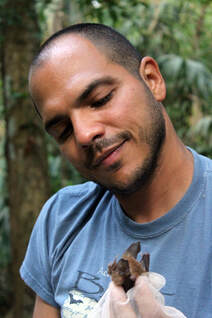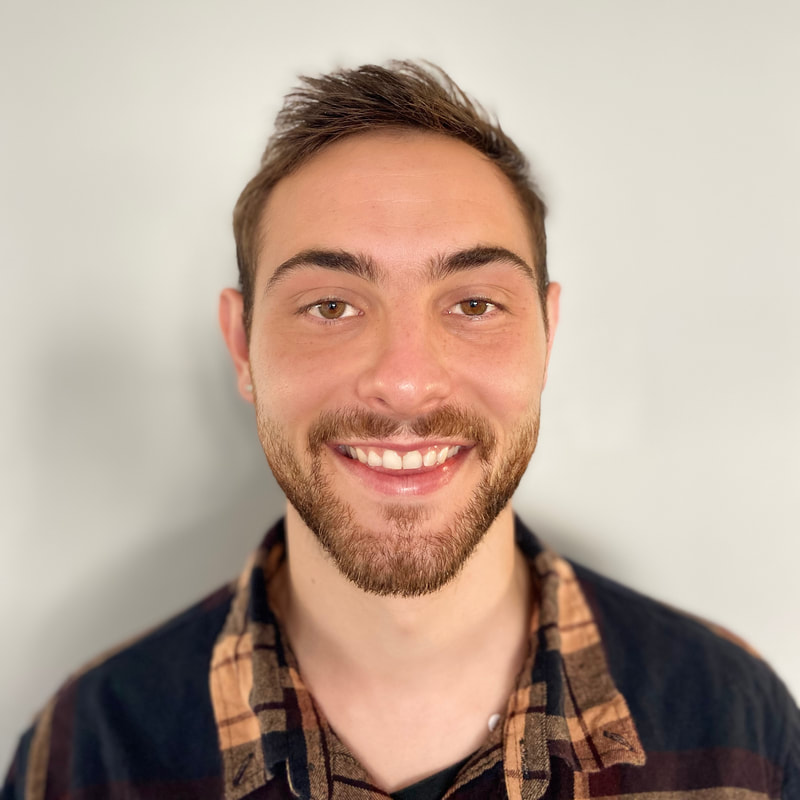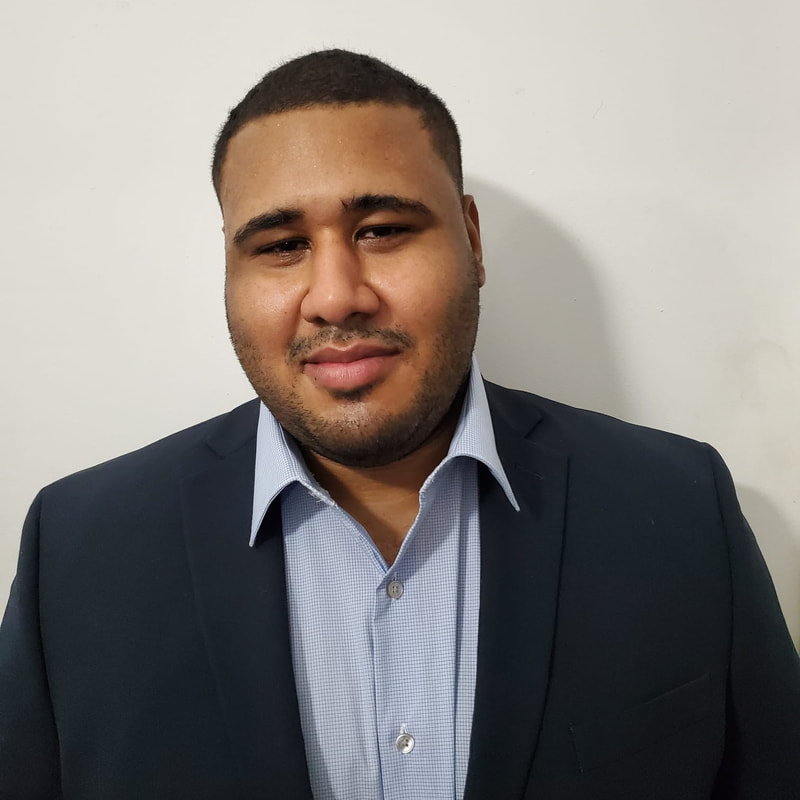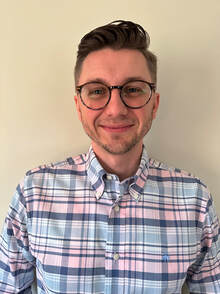-
PI: Angelo
-
Postdoc: Karen
-
Phd student: Pedro
-
MS student: Edgardo
-
Undergrad: Kamil
<
>
|
J. Angel Soto-Centeno, PhD
I’m interested in population level processes and combine phylogeography, species distribution modeling, and fossils to solve evolutionary & demographic questions. I study recent mammal extinctions in the Caribbean, primarily in bats. I use genetic, fossil, and distribution model data to examine how recent climate change (i.e. from Pleistocene to Holocene) and anthropogenic habitat change affected populations of island bats. The combined use of these data is powerful and help us evaluate hypotheses about the evolutionary processes that shaped island bats and how they reacted to climate change and habitat change from past to present. By using this framework, I hope to improve our understanding of what happens to these bats today and better predict what may happen to them in the future. This program is question-driven and I have also applied these tools to other systems (e.g. rodents, cervids, and amphibians) in island and mainland environments. Other areas of research in my lab include questions on demography, population connectivity, community composition, natural history and speciation/species delimitation in mammals. Check out Angelo's Google Scholar for a sample of publications. Get an up-to-date version of Angelo's CV here. |
|
I am originally from Brazil, and I am going to start the 3rd year of my Ph.D. at Rutgers-Newark. I have a bachelor's degree in Biological Sciences, and I'm also a licensed teacher in Natural Sciences. I study evolutionary and biogeography events at the species level, with a special interest in accurately defining species limits using methods that combine genetic, morphological, and ecological evidence. My current research is focused on bats from the American continent, specifically in the Caribbean islands, pursuing questions regarding those creatures' evolution and natural history. When I'm not researching or teaching, I enjoy activities like hiking, biking, and having cultural exchanges over a cup of coffee!
|
|
Edgardo Lopez Morell (graduate student, MS)
I am interested in the intra-island population genomics and ecology of the velvety free-tailed bat (Molossus molossus) on the island of Puerto Rico. In my study, I use SNPs from across the genome to examine populations, which will be used to identify the genetic variability and structure across the island, from urban to rural areas. These data will be integrated with connectivity models to ascertain the movement of the species and existing habitat corridors. Bat samples were collected throughout the island and divided into three regions based on ecological differences and locations. These will later be used to compare the genetic profiles of these populations in order to compare their genetic variance and establish possible biological corridors based on the genetic differences between said populations. Currently finishing MS degree at Universidad Interamericana de Puerto Rico. |
|
Kamil Kozlowski (undergraduate student)
My main areas of interest are bioacoustics and biodiversity in urban systems. I got the chance to combine both areas of interest in the current project, where I manually identify bat echolocation data to quantify bat activity and diversity in New Jersey. The calls were recorded in both urban systems and green spaces across the state to learn more about species abundance through non-invasive methods. I believe it is crucial to understand the way anthropogenic processes influence and shape biodiversity. Soon, I would like to complement the study with a more expanded project in urban systems, forests, and parks in New Jersey. I love reading, hiking, and spending time with my family! Currently pursuing BS degree at Rutgers – Newark. |
Research at the SLaBB
Interested in our studies?
If you are interested in biogeography, ecological niche modeling, genomics, paleontology, phylogeography, and systematics of bats, or other mammals, reach out to the PI for a chat.
Are you a good fit for the SLaBB?
We seek hard workers, independent thinkers, creators, problem solvers, highly motivated, and punctual scientists. You are not expected to know everything, but you are expected to do the necessary background reading, lab and field work, data analysis, and writing to take your project to the finish line. Whether you work on a new idea or were given a project from the lab, you are expected to take ownership and do what it takes to complete the work; it is your own experience and no one will do it for you.
How to join:
If you are interested in biogeography, ecological niche modeling, genomics, paleontology, phylogeography, and systematics of bats, or other mammals, reach out to the PI for a chat.
Are you a good fit for the SLaBB?
We seek hard workers, independent thinkers, creators, problem solvers, highly motivated, and punctual scientists. You are not expected to know everything, but you are expected to do the necessary background reading, lab and field work, data analysis, and writing to take your project to the finish line. Whether you work on a new idea or were given a project from the lab, you are expected to take ownership and do what it takes to complete the work; it is your own experience and no one will do it for you.
How to join:
- For PhD or MS degree info, go here.
- Students can apply to the Richard Gilder Graduate School PhD Program in Comparative Biology starting in Fall 2024. This is a highly selective program. Contact me to discuss a research project before applying.
- If you are interested in joining the lab as a graduate student, first read these: Modest Advise (by SC Stearns) and RB Huey's response. Then reach out to the PI.
- Undergrads looking for research opportunities, follow the list below before inquiring:
- familiarize yourself with the ongoing research in the lab by reading some of our papers
- ask yourself "why do I want to join this lab?"
- stay grounded and be realistic – for a research experience to be meaningful, it typically requires at least 30 hrs of work/week in the summer and/or at least 10 hrs of work/week during the semester. Anything less than that will not work
- always remember that doing research is our job, not a hobby
- The AMNH has its own Research Experiences for Undergraduates summer program. For info see AMNH Biology summer REU. This is a highly selective program.
- Post-docs can seek info here.
- PhD scientists can apply to the Postdoctoral Research Fellowship Program of the AMNH. Contact me to discuss a research project before applying.
- Reach out if you are interested in applying for external (e.g. NSF) funding to join the SLaBB.
Past members at RU, AMNH, and FLMNH (* = published work)
26. Asyra Simon (Rutgers-Newark, 2023 undergraduate)
25. Karen Olson (Rutgers University, 2021–2023, postdoctoral scholar)
24. Camilo Calderón-Acevedo (Rutgers University, 2020–2022, postdoctoral scholar)
23. Amani Abdelsalam (Rutgers University, 2020–2022, MS student graduate)
22. Xitlaly Franquez (Pitzer College, Urban Ecology Summer REU 2021)
21. Brianna Rosania (Rutgers-Newark, Urban Ecology Summer REU 2021)
20. Abhi Salunia (Rutgers-Newark, 2021)
19. Teresa Mendoza (Rutgers-Newark, 2020–2021 LSAMP)
18. Coral Caceres (Rutgers-Newark, 2020)
17. Alejandra Urbano (Rutgers-Newark, 2019–2020 LSAMP)
16. Ashley Moraski (Rutgers-Newark, 2018–2020)
15. Shahida Kamal (Rutgers-Newark, 2019)
14. Katherine Vazquez (Rutgers-Newark, 2018–2019 LSAMP)
13. Kendall Sweeney (Rutgers-Newark, 2018–2019)
12. Brianna Thai (AMNH. NSF SRMP, Brooklyn Technical High School, Fall 2015–Spring 2016)
11. Cherena Bradley (AMNH. NSF SRMP, Health Professions High School, Fall 2015–Spring 2016)
10. Aja C. Marcato (AMNH. MS Long Island University, LIU Post, Summer–Fall 2014)
9. Maggie O’Brien* (AMNH. NSF REU, Manhattan College, Summer 2014–Spring 2015)
8. Lauren Frankel (AMNH. High School Intern, Bergen County Academies, Fall 2014–Spring 2015)
7. Tali Magori (AMNH. Tel Aviv University PhD visiting scientist, Fall 2014)
6. Isabel Gomez (AMNH. Undergraduate Intern, Harvard University, Summer 2014)
5. Melina G. Marte* (FLMNH. BS University of Florida, Fall 2010–Spring 2013)
4. Brandi Jo Petronio (FLMNH. BS University of Florida, Spring–Fall 2012)
3. Kristin C. Magrini (FLMNH. BS University of Florida, Fall 2011–Spring 2012)
2. Sergio C. Gonzalez* (FLMNH. BS University of Florida, Spring–Fall 2009)
1. Lisa N. Barrow* (FLMNH. BS University of Florida, Spring–Summer 2009)
25. Karen Olson (Rutgers University, 2021–2023, postdoctoral scholar)
24. Camilo Calderón-Acevedo (Rutgers University, 2020–2022, postdoctoral scholar)
23. Amani Abdelsalam (Rutgers University, 2020–2022, MS student graduate)
22. Xitlaly Franquez (Pitzer College, Urban Ecology Summer REU 2021)
21. Brianna Rosania (Rutgers-Newark, Urban Ecology Summer REU 2021)
20. Abhi Salunia (Rutgers-Newark, 2021)
19. Teresa Mendoza (Rutgers-Newark, 2020–2021 LSAMP)
18. Coral Caceres (Rutgers-Newark, 2020)
17. Alejandra Urbano (Rutgers-Newark, 2019–2020 LSAMP)
16. Ashley Moraski (Rutgers-Newark, 2018–2020)
15. Shahida Kamal (Rutgers-Newark, 2019)
14. Katherine Vazquez (Rutgers-Newark, 2018–2019 LSAMP)
13. Kendall Sweeney (Rutgers-Newark, 2018–2019)
12. Brianna Thai (AMNH. NSF SRMP, Brooklyn Technical High School, Fall 2015–Spring 2016)
11. Cherena Bradley (AMNH. NSF SRMP, Health Professions High School, Fall 2015–Spring 2016)
10. Aja C. Marcato (AMNH. MS Long Island University, LIU Post, Summer–Fall 2014)
9. Maggie O’Brien* (AMNH. NSF REU, Manhattan College, Summer 2014–Spring 2015)
8. Lauren Frankel (AMNH. High School Intern, Bergen County Academies, Fall 2014–Spring 2015)
7. Tali Magori (AMNH. Tel Aviv University PhD visiting scientist, Fall 2014)
6. Isabel Gomez (AMNH. Undergraduate Intern, Harvard University, Summer 2014)
5. Melina G. Marte* (FLMNH. BS University of Florida, Fall 2010–Spring 2013)
4. Brandi Jo Petronio (FLMNH. BS University of Florida, Spring–Fall 2012)
3. Kristin C. Magrini (FLMNH. BS University of Florida, Fall 2011–Spring 2012)
2. Sergio C. Gonzalez* (FLMNH. BS University of Florida, Spring–Fall 2009)
1. Lisa N. Barrow* (FLMNH. BS University of Florida, Spring–Summer 2009)
We have terrific collaborations with:
Marcelo Gehara (American Museum of Natural History)
Carlos A. Mancina (Instituto de Ecología y Sistemática de Cuba)
Rodrigo Medellín (Universidad Autónoma de México)
Joha Orihuela (Florida International University)
Bernal Rodríguez (Universidad de Costa Rica)
Armando Rodríguez-Durán (Universidad Interamericana de Puerto Rico)
Sara Ruane (Field Museum of Natural History)
Gilberto Silva Taboada (Museo Nacional de Historia Natural de Cuba)
Nancy B. Simmons (American Museum of Natural History)
David W. Steadman (Florida Museum of Natural History)
Scott Tremor (San Diego Natural History Museum)
Lázaro Viñola (Florida Museum of Natural History)
David Waldien (Red List Authority Coordinator)
Jessica L. Ware (American Museum of Natural History)
Paul Webala (Maasai Mara University)
Carlos A. Mancina (Instituto de Ecología y Sistemática de Cuba)
Rodrigo Medellín (Universidad Autónoma de México)
Joha Orihuela (Florida International University)
Bernal Rodríguez (Universidad de Costa Rica)
Armando Rodríguez-Durán (Universidad Interamericana de Puerto Rico)
Sara Ruane (Field Museum of Natural History)
Gilberto Silva Taboada (Museo Nacional de Historia Natural de Cuba)
Nancy B. Simmons (American Museum of Natural History)
David W. Steadman (Florida Museum of Natural History)
Scott Tremor (San Diego Natural History Museum)
Lázaro Viñola (Florida Museum of Natural History)
David Waldien (Red List Authority Coordinator)
Jessica L. Ware (American Museum of Natural History)
Paul Webala (Maasai Mara University)

 https://orcid.org/0000-0002-1729-1153
https://orcid.org/0000-0002-1729-1153


